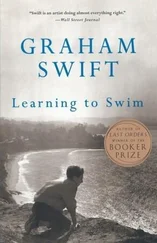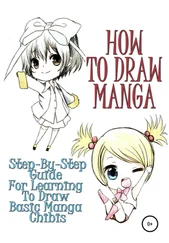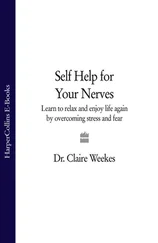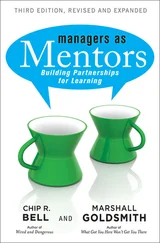5 Chapter 5Figure 5.1. Overhead view of a downtown map made of Lego with the Tangible Box Figure 5.2. Interactive map of France for identifying the cities of France and r...Figure 5.3. The central map initially used by the instructor Figure 5.4. Map and exploration of the room. On the left: the guide explores the...
6 Chapter 6Figure 6.1. Digital tool screen capture Figure 6.2. Deviation in skills in French CM (fourth/fifth grades) – weeks 1 and...Figure 6.3. Deviation in skills in math CM (fourth/fifth grades) – weeks 1, 2 an...Figure 6.4. Deviation in skills in French CM (fourth/fifth grades) – weeks 7 and...Figure 6.5. Deviation in skills in math CM (fourth/fifth grades) – weeks 7 and 8...Figure 6.6. Self-evaluation bar drawn by a student Figure 6.7. Oscar’s self-evaluation, first session Figure 6.8. Axel’s self-evaluation, first session Figure 6.9. Max’s self-evaluation, first session Figure 6.10. Self-evaluations for group 1 Figure 6.11. Self-evaluations for group 2. For a color version of this figure, s...Figure 6.12. Self-evaluations for group 3 Figure 6.13. Extract of the comparison table for self-evaluation and the teacher...
7 Chapter 7Figure 7.1. Sound garden, work by elementary school pupils produced using recycl...Figure 7.2. Activities presented in the pupils’ creative process journals Figure 7.3. Steps in the pupils’ creative process during the sound garden projec...Figure 7.4. Steps in the pupils’ creative process during the sound garden projec...Figure 7.5. Multivariate factors involved in the five teaching–learning sequence...
8 Chapter 8Figure 8.1. Methodology of didactic analysis Figure 8.2. Two complementary models of topogenesis Figure 8.3. The experimental protocol group poster, in process Figure 8.4. Changes in the status of objects in the environment
9 Chapter 9Figure 9.1. Sequence 1: functional use of the bell (Rodríguez and Moreno-Llanos ...Figure 9.2. Sequence 2: functional use of the metallophone instrument (Moreno-Ll...Figure 9.3. Sequence 3: functional use of a spoon tool (Rodríguez et al. 2017) Figure 9.4. Sequence 4: organization of symbolic scenario Figure 9.5. Sequence 5: positive self-evaluation with private and teacher-direct...Figure 9.6. Sequence 6: understanding how the device works (Rodríguez and Moreno...
10 Chapter 10Figure 10.1. Harmonica from the trenches (1938)1 Figure 10.2. Old doll from Rastro (Madrid) Figure 10.3. L’objet qui parle (The Speaking Object) store (Paris) Figure 10.4. A fragment of railway ballast from the entrance to Auschwitz Figure 10.5. The cigarette butt display8 Figure 10.6. “ Banquet of the Officers of the St. George Civic Guard” (1616), 201...Figure 10.7. Ticket for the number 8 tram line in Amsterdam Figure 10.8. Alfredo Di Stéphano’s soccer cleats, River Plate Museum (Buenos Air...Figure 10.9. Interview with the Dama de Elche , students aged nine to ten (2018) Figures 10.10 and 10.11. The real story of the Dama de Elche. Work by students a...
1 Chapter 1 Table 1.1. Points of reference in upper elementary curricula for 2002, 2008 and ... Table 1.2. Indefinite places Table 1.3. Cities Table 1.4. Spatial containers Table 1.5. Locatable points of reference Table 1.6. The retained points of reference and project relaunches Table 1.7. Evaluation of points of reference through the six most frequently cor... Table 1.8. Frequency of occurrence for the most precisely identified points of r...
2 Chapter 2 Table 2.1. Interactions between Koula/teacher Table 2.2. Changes in the durations of the five sequences of the calendar ritual
3 Chapter 3Table 3.1. Distribution of the corpus of maps by class level and academy
4 Chapter 4Table 4.1. Analysis of the sequence and references in the Swiss Francophone curr...Table 4.2. Session sequence with analysis of targeted cognitive skills Table 4.3. Students’ graphical designs
5 Chapter 5Table 5.1. Description of the participants Table 5.2. Success rate for the number of clues correctly located, in order and ...
6 Chapter 8Table 8.1. Summary of session 4 Table 8.2. Proposition by T1 of an experimental protocol: episode 1 Table 8.3. Manifestation of students’ existing knowledge: episode 2 Table 8.4. Proposition to pair factors: episode 3 Table 8.5. Student resistance – episode 4 Table 8.6. Not taking changes in the students’ hypotheses into account: episode ...Table 8.7. Distribution of students’ and teachers’ topogenetic postures for the ...
1 Cover
2 Table of Contents
3 Title Page Education Set coordinated by Angela Barthes and Anne-Laure Le Guern Volume 11
4 Copyright First published 2022 in Great Britain and the United States by ISTE Ltd and John Wiley & Sons, Inc. Apart from any fair dealing for the purposes of research or private study, or criticism or review, as permitted under the Copyright, Designs and Patents Act 1988, this publication may only be reproduced, stored or transmitted, in any form or by any means, with the prior permission in writing of the publishers, or in the case of reprographic reproduction in accordance with the terms and licenses issued by the CLA. Enquiries concerning reproduction outside these terms should be sent to the publishers at the undermentioned address: ISTE Ltd 27-37 St George’s Road London SW19 4EU UK www.iste.co.uk John Wiley & Sons, Inc. 111 River Street Hoboken, NJ 07030 USA www.wiley.com © ISTE Ltd 2022 The rights of Joël Bisault, Roselyne Le Bourgeois, Jean-François Thémines, Mickaël Le Mentec and Céline Chauvet-Chanoine to be identified as the authors of this work have been asserted by them in accordance with the Copyright, Designs and Patents Act 1988. Any opinions, findings, and conclusions or recommendations expressed in this material are those of the author(s), contributor(s) or editor(s) and do not necessarily reflect the views of ISTE Group. Library of Congress Control Number: 2021949741 British Library Cataloguing-in-Publication Data A CIP record for this book is available from the British Library ISBN 978-1-78630-774-3
5 Preface
6 Acknowledgements
7 Begin Reading
8 List of Authors
9 Index
10 Summary of Volume 1
11 End User License Agreement
1 v
2 iii
3 iv
4 xi
5 xii
6 xiii
7 xiv
8 xv
9 xvi
10 xvii
11 xviii
12 xix
13 xxi
14 1
15 3
16 4
17 5
18 6
19 7
20 8
21 9
22 10
23 11
24 12
25 13
26 14
27 15
28 16
29 17
30 18
31 19
32 20
33 21
34 22
35 23
36 24
37 25
38 26
39 27
40 28
41 29
42 30
43 31
44 32
45 33
46 34
47 35
48 36
49 37
50 38
51 39
52 40
53 41
54 42
55 43
56 45
57 46
58 47
59 48
60 49
61 50
62 51
63 52
64 53
65 54
66 55
67 56
68 57
69 58
70 59
71 60
72 61
73 62
74 63
75 64
76 65
77 66
78 67
79 68
80 69
81 70
82 71
83 72
84 73
85 75
86 76
87 77
88 78
89 79
90 80
91 81
92 82
93 83
94 84
95 85
96 86
Читать дальше












